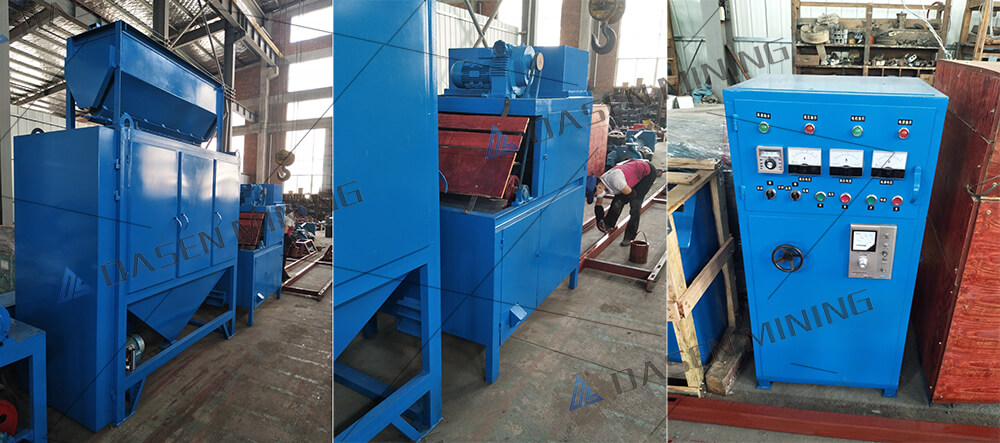What is Electrostatic Separation and How Does it Work in Mining?
Electrostatic separation is a specialized technique used in mineral processing to separate minerals based on their electrical conductivity. This method is particularly effective for fine-grained minerals that cannot be easily separated using other techniques like magnetic separation.
How it Works
When minerals pass through a strong electrostatic field, conductive minerals become charged and are attracted to the oppositely charged electrode. Non-conductive minerals, on the other hand, experience a much weaker force and follow a different trajectory. This differential movement allows for the separation of minerals based on their electrical conductivity.
Comparison with Magnetic Separation
While both electrostatic and magnetic separation are used in mineral processing, they have distinct applications:
Electrostatic separation: Ideal for separating minerals based on conductivity, especially for fine-grained particles.
Magnetic separation: Used for separating magnetic minerals, such as iron ore.
In many cases, electrostatic and magnetic separation are used in combination to achieve optimal results. For instance, in the processing of titanium-bearing minerals, magnetic separation is often used as a pre-concentration step, followed by electrostatic separation for final purification.
Factors Affecting Electrostatic Separation
Particle size: Electrostatic separation is most effective for particles in the range of 0.1 to 2 mm.
Surface conditions: The surface properties of the minerals, such as moisture content and the presence of coatings, can affect separation efficiency.
Electrode design: The design of the electrodes significantly influences the separation process.
Applications in Mining
Electrostatic separators are widely used in the mining industry for processing a variety of minerals, including:
Titanium: Separating titanium minerals from non-conductive impurities.
Zirconium: Processing zirconium-bearing minerals.
Rare earth elements: Separating rare earth minerals from associated minerals.
Other minerals: Used for processing minerals like gold, tungsten, tantalum, and tin.
Advantages of Electrostatic Separation
High efficiency: Effective in separating fine-grained minerals with similar densities.
Versatility: Applicable to a wide range of minerals.
Low operating costs: Relatively low energy consumption.
Environmental friendliness: Does not require the use of harmful chemicals.
Electrostatic separation is a valuable tool in the mineral processing industry, offering a precise and efficient method for separating minerals based on their electrical conductivity. By understanding the principles of electrostatic separation and its applications, mining engineers can optimize their mineral processing operations.
Whatsapp:+86 133 1927 7356
Email:[email protected]


